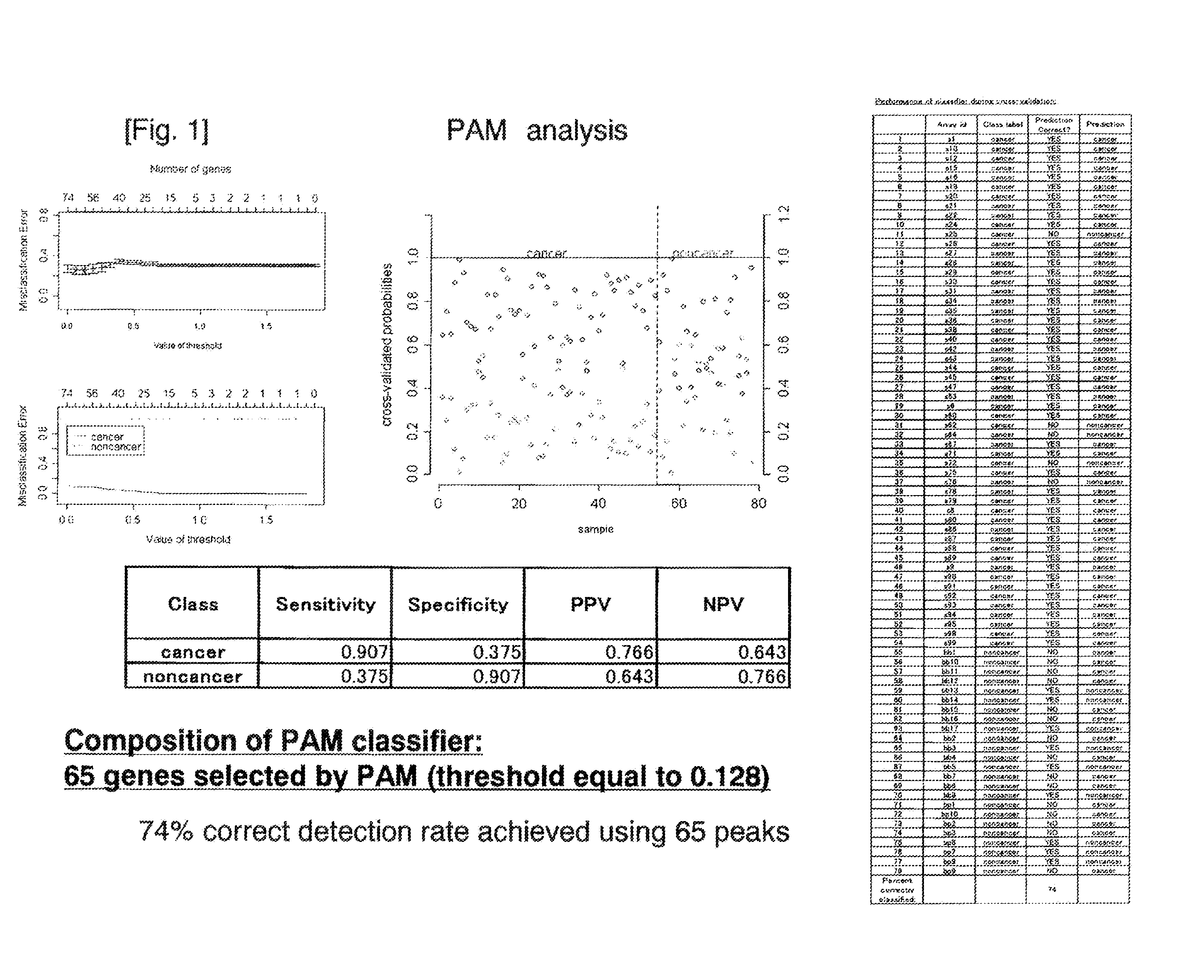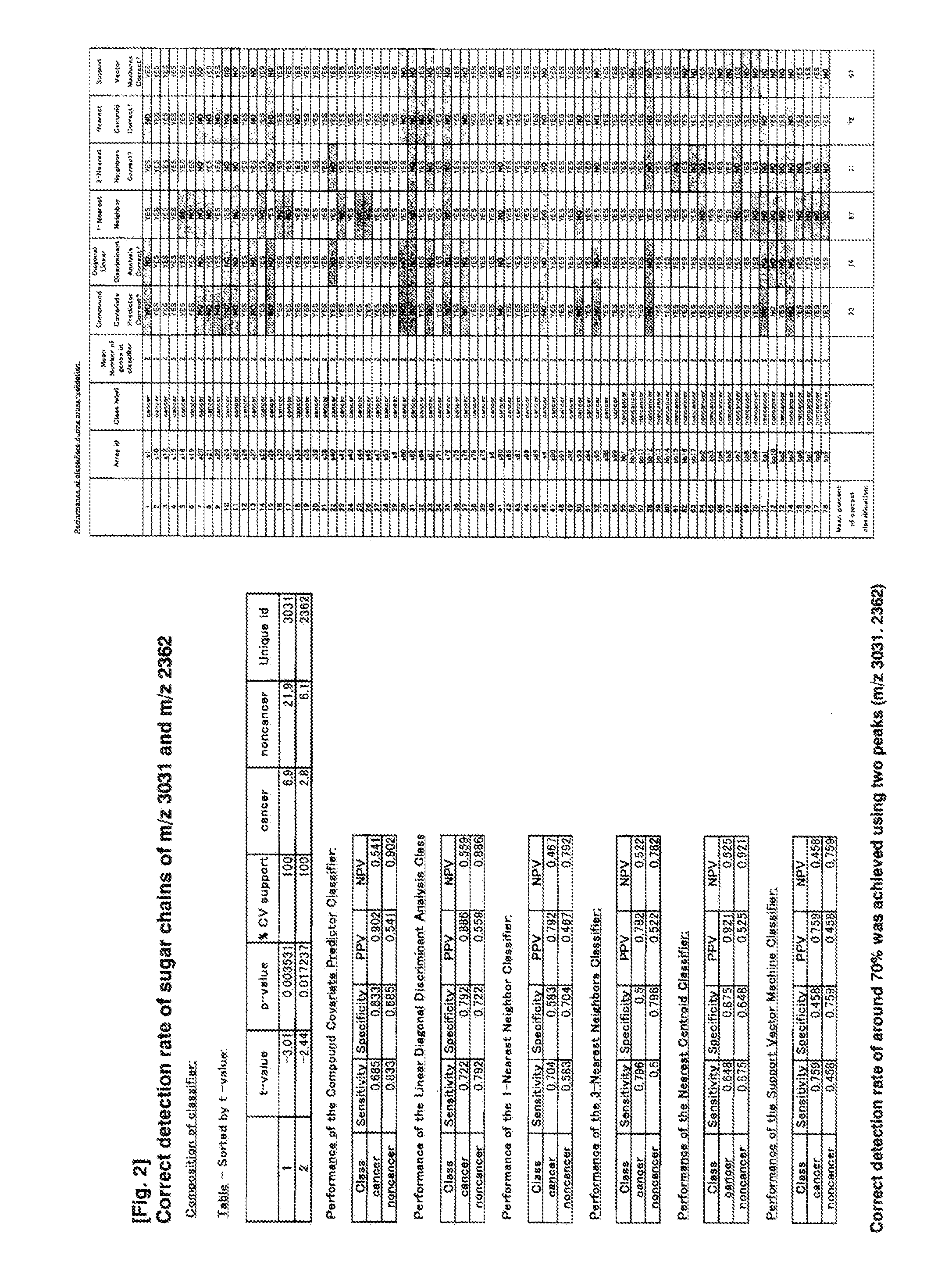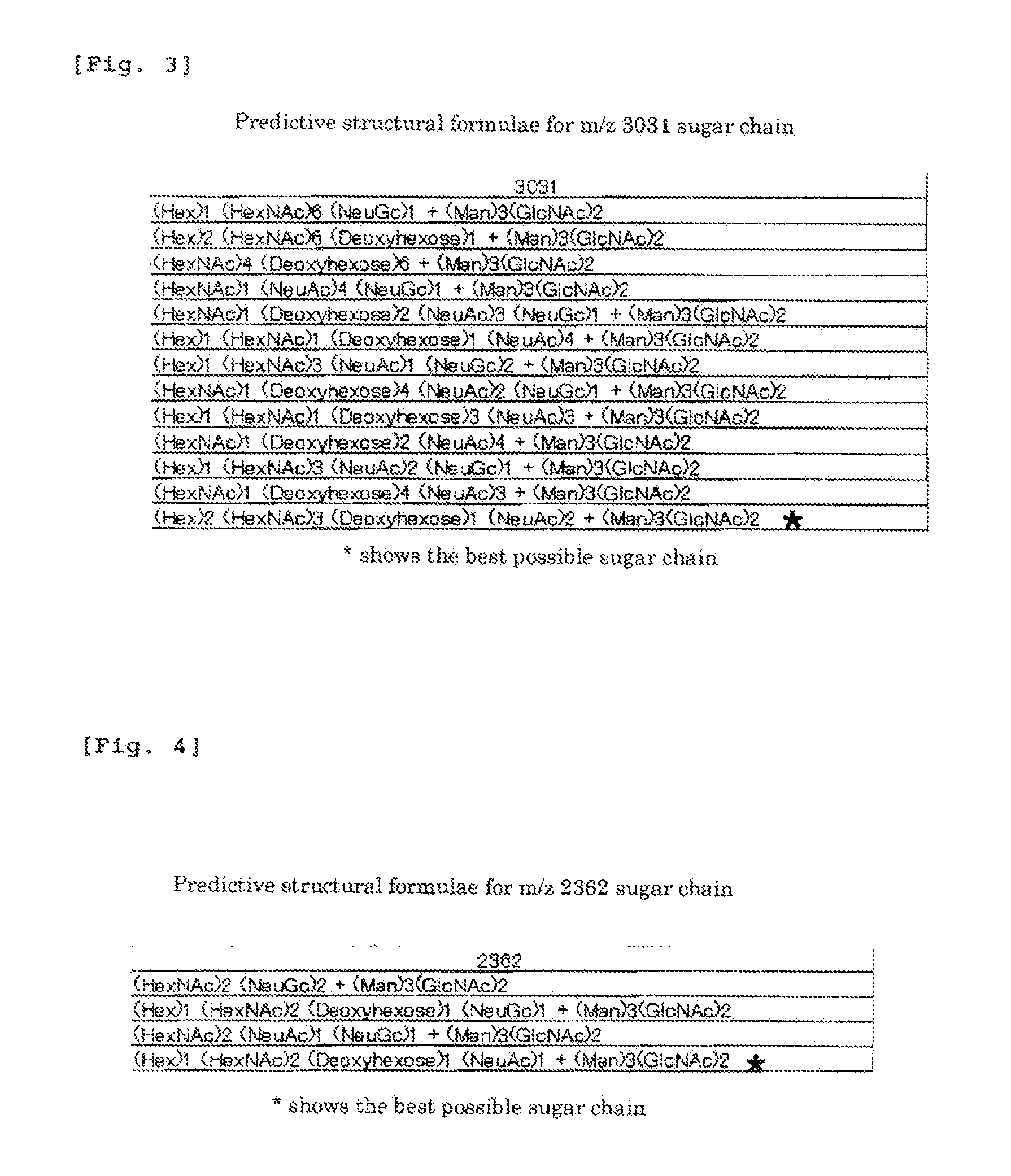Method of Diagnosing Pancreatic Cancer with the Use of N-Binding Type Sugar Chains
a pancreatic cancer and n-binding technology, applied in the field of pancreatic cancer diagnosis with the use of n-binding type sugar chains, can solve the problems of specificity, insufficient tumor marker specifically and reliably, and difficulty in detecting cancer at an early stag
- Summary
- Abstract
- Description
- Claims
- Application Information
AI Technical Summary
Benefits of technology
Problems solved by technology
Method used
Image
Examples
example 1
[0037]After obtaining informed consent from patients, blood was collected from the patients of 78 cases in total including patients of 24 cases with pancreaticobiliary-duct benign disorder (16 gallstone cases and 8 pancreatitis cases) and the patients of 54 cases with pancreatic cancer, and the plasma was centrifuged. The obtained specimens (plasma) were anonymized in a linkable fashion, and kept frozen at −80° C.
[Preparation of Blood Samples]
[0038]In order to release modified sugar chains from protein, the plasma was treated with N-glycosidase F and trypsin. Specifically, to a 100 μL of plasma, pure water (165 μL), 1M ammonium bicarbonate (25 μL), and 120 mM dithiothreitol (25 μL) were added, and the mixture was allowed to stand for 30 minutes at 60° C. Then, 123 mM iodoacetamide (50 μL) was added, and the resultant mixture was allowed to stand under shade for 1 hour at room temperature. Subsequently, trypsin (2000 units, 25 μL) was added, and the resultant mixture ...
PUM
| Property | Measurement | Unit |
|---|---|---|
| length | aaaaa | aaaaa |
| temperature | aaaaa | aaaaa |
| volume | aaaaa | aaaaa |
Abstract
Description
Claims
Application Information
 Login to View More
Login to View More - R&D
- Intellectual Property
- Life Sciences
- Materials
- Tech Scout
- Unparalleled Data Quality
- Higher Quality Content
- 60% Fewer Hallucinations
Browse by: Latest US Patents, China's latest patents, Technical Efficacy Thesaurus, Application Domain, Technology Topic, Popular Technical Reports.
© 2025 PatSnap. All rights reserved.Legal|Privacy policy|Modern Slavery Act Transparency Statement|Sitemap|About US| Contact US: help@patsnap.com



